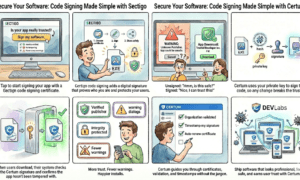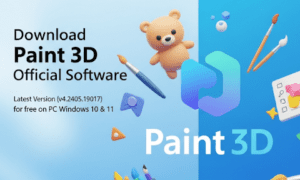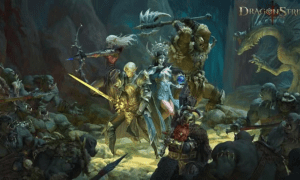Blockchain games are reshaping the landscape of digital entertainment, offering a blend of technology and gameplay that is both revolutionary and engaging. They leverage blockchain technology to create a transparent, decentralized, and secure gaming environment where players have true ownership of their digital assets.
The Essence of Blockchain in Gaming
At its core, blockchain technology introduces decentralization to gaming, allowing for transparent, secure, and immutable transactions. This means that every transaction, whether it’s buying a new character or trading an item, is recorded on a public ledger that cannot be altered.
In traditional games, the assets you acquire are confined within the game’s ecosystem. However, blockchain liberates these assets, granting players true ownership and the ability to trade them across various platforms. This is primarily realized through Non-Fungible Tokens (NFTs), which represent unique in-game items or characters. NFTs ensure that each item is distinct and owned by a single player, making trading seamless and secure.
Blockchain’s decentralized nature also removes the need for intermediaries, reducing costs and increasing efficiency. This transparency builds trust among players, knowing that the rules are enforced by code and not subject to human manipulation. As a result, players feel more engaged and committed to games that offer such a fair and open environment.
The Rise of Axie Infinity
Axie Infinity stands as a paragon of blockchain gaming success. It merges collectible, battle-based gameplay with a cryptocurrency economy. Players breed, battle, and trade fantastical creatures known as “Axies”. Each Axie is an NFT, providing a tangible value that extends beyond the game.
The game operates on the Ethereum blockchain, utilizing smart contracts to facilitate transactions and ensure security. This decentralized approach not only enriches gameplay but also fosters an active community of players who are stakeholders in the game’s economy. As players engage more deeply, they invest both time and money, enhancing the game’s value and their potential earnings.
Axie Infinity’s success can be attributed to its vibrant community and innovative play-to-earn model. Players are rewarded for their participation, allowing them to earn real-world income through gameplay. This model has not only attracted gamers but also individuals looking for new forms of digital investment. The game’s economy is a living entity, evolving with player interactions and market trends, creating a dynamic and engaging experience.
Building Blockchain Games: The Fundamentals
Creating a blockchain game requires understanding the interplay between technology, design, and community engagement. The fundamentals of blockchain game development lay the groundwork for building a successful and sustainable game that captivates players and keeps them coming back.
Key Components of Blockchain Game Development
To venture into blockchain game development, one must grasp several critical components that form the backbone of a successful game:
- Blockchain Platform: Selecting the appropriate blockchain is crucial. Ethereum is popular due to its robust smart contract functionality, but other platforms like Binance Smart Chain and Polygon offer advantages in speed and transaction fees. Choosing the right platform affects the game’s performance, cost, and user experience.
- Smart Contracts: These are self-executing contracts with the terms of the agreement directly written into code. They govern the game’s rules, transactions, and operations autonomously. Understanding how to write secure and efficient smart contracts is vital to maintaining the game’s integrity and functionality.
- NFT Integration: NFTs are essential for representing unique game assets. Understanding how to create, manage, and trade NFTs on your chosen blockchain is fundamental. This includes designing the assets, setting their properties, and implementing a marketplace for trading.
- Tokenomics: This involves designing the economic model of the game, including in-game currency, rewards, and the overall economic incentives for players. A well-designed tokenomics strategy ensures a balanced economy that rewards players and sustains the game’s ecosystem.
- Security and Scalability: Ensuring the game is secure from hacks and can handle a growing number of players is crucial. Implementing proper security measures and considering scalability solutions are essential steps in game development.
Tools and Technologies
A variety of tools and technologies are pivotal in the development of blockchain games, offering developers the means to bring their visions to life:
- Solidity: A programming language used for writing smart contracts on Ethereum. Mastery of Solidity allows developers to create complex and secure contracts that govern game mechanics.
- Web3.js: A JavaScript library that facilitates interaction with the Ethereum blockchain. It enables developers to build web applications that communicate with blockchain networks, allowing for seamless integration of blockchain features into the game.
- Truffle Suite: A development framework for Ethereum, offering tools for testing and deploying smart contracts. Truffle streamlines the development process, making it easier to manage the lifecycle of smart contracts.
- OpenZeppelin: A library of modular, reusable smart contracts for Ethereum. OpenZeppelin provides secure and tested contracts that developers can integrate into their games, reducing development time and risk.
- IPFS (InterPlanetary File System): A protocol for storing and sharing files in a decentralized manner. IPFS is often used to store game assets off-chain, ensuring they are accessible and secure.
Crafting Your Blockchain Game
The journey of creating a blockchain game begins with a vision and evolves through a structured process of design, development, and community engagement. Crafting a successful game requires creativity, technical expertise, and a deep understanding of player dynamics.
Conceptualizing Your Game
The journey begins with a compelling concept. Consider the following steps to lay the foundation for your game:
- Narrative and Mechanics: Develop a captivating storyline and engaging game mechanics. Think about how blockchain can enhance these elements through true asset ownership and decentralized marketplaces. A strong narrative keeps players invested, while innovative mechanics offer fresh and exciting gameplay.
- Community and Economy: Envision the community you wish to cultivate and the economic model that will sustain your game. Axie Infinity, for instance, thrives on its active player community and play-to-earn model. Building a community involves creating spaces for interaction and collaboration, fostering a sense of belonging and ownership.
- Market Research: Analyze existing blockchain games to identify trends, gaps, and opportunities. Understanding what players enjoy and what they seek in new games can inform your design choices and help position your game competitively.
Development Process
Developing a blockchain game involves several stages, each critical to bringing your concept to life:
- Prototyping: Start with a prototype to test core mechanics and blockchain functionality. This phase allows you to experiment with ideas and identify potential challenges early on.
- Smart Contract Development: Write and test smart contracts to govern game logic and asset management. Ensuring these contracts are secure and efficient is crucial to the game’s success.
- NFT Creation: Design and mint NFTs that represent in-game items or characters. Creating visually appealing and functional NFTs adds depth and value to the game experience.
- Beta Testing: Engage a community of testers to provide feedback on gameplay and technical aspects. Beta testing helps refine the game, identify bugs, and improve the overall player experience.
- Launch: Deploy your game on the blockchain, ensuring scalability and security. A successful launch involves marketing, community engagement, and ongoing support to maintain player interest and satisfaction.
Overcoming Challenges
Blockchain game production presents unique challenges, including scalability issues, high transaction fees, and user onboarding complexities. Solutions such as Layer 2 scaling, gas fee optimization, and intuitive user interfaces can mitigate these challenges.
- Scalability: Implement Layer 2 solutions or alternative blockchains to handle increased player activity without compromising performance. Scalability is essential for accommodating a growing user base and maintaining a smooth gaming experience.
- Transaction Fees: Optimize smart contracts and explore platforms with lower fees to reduce costs for players. High transaction fees can deter players, so finding ways to minimize these costs is crucial.
- User Onboarding: Simplify the onboarding process with user-friendly interfaces and educational resources. Helping players understand blockchain mechanics enhances their experience and encourages long-term engagement.
The Future of Blockchain Gaming
The future of blockchain gaming is brimming with potential, offering opportunities for innovation, community building, and new revenue models. As technology evolves, so too will the games that captivate and inspire players around the world.
Opportunities for Game Developers in India
India, with its burgeoning tech talent pool, is well-positioned to become a hub for blockchain game making. game developers in India can leverage their skills in software development and blockchain to create innovative gaming experiences that appeal to a global audience.
- Collaborative Ecosystem: India’s tech industry is characterized by collaboration and knowledge sharing. Developers can tap into this ecosystem to learn, grow, and innovate, creating games that stand out in the global market.
- Government Support: With increasing interest in blockchain technology, Indian developers may find support in the form of government initiatives and funding. This support can accelerate development and open new avenues for growth.
- Cultural Influence: Indian developers can infuse cultural elements into their games, offering unique narratives and experiences that resonate with diverse audiences. This cultural richness can be a significant differentiator in the competitive gaming landscape.
The Role of NFT Game Development
NFTs have revolutionized how value is perceived in games. Developers can experiment with new monetization strategies and gameplay dynamics that offer players meaningful interactions and rewards.
- Innovative Monetization: NFTs enable developers to explore new revenue streams, such as selling unique assets, offering exclusive content, and creating limited edition items. These strategies can enhance player engagement and generate sustainable income.
- Player Empowerment: By owning NFTs, players have a stake in the game’s economy and can benefit from their investments. This empowerment fosters loyalty and encourages players to participate actively in the game’s ecosystem.
- Dynamic Gameplay: NFTs allow for dynamic and evolving gameplay, where players can influence the game’s direction and outcomes. This interactivity adds depth and excitement, keeping players engaged and invested.
Engaging the Gaming Community
As a game developer, journalist, or content strategy manager, engaging the gaming community is paramount. Foster discussions around game mechanics, narrative depth, and the implications of blockchain technology. Encourage feedback and debate to refine and enhance the gaming experience.
- Community Building: Create platforms and spaces for players to connect, share experiences, and collaborate. A strong community enhances player retention and fosters a sense of belonging.
- Open Communication: Maintain transparency and open communication with your community, addressing concerns and incorporating feedback. This openness builds trust and strengthens the relationship between developers and players.
- Events and Contests: Host events and contests to keep players engaged and active. These activities encourage participation, reward creativity, and create memorable experiences that players cherish.
Conclusion
Blockchain games like Axie Infinity exemplify the potential of merging gaming with decentralized technology. They offer players unprecedented ownership and opportunities for economic participation. By understanding the core principles of blockchain game development and creatively applying them, you can craft games that captivate and inspire.
Whether you are a developer, journalist, or content strategist, the blockchain gaming arena offers a rich landscape for exploration and innovation. Embark on this journey with a commitment to learning and adapting, and you may just create the next groundbreaking experience in the ever-evolving world of blockchain gaming. The future is bright for those ready to embrace the challenges and opportunities that blockchain technology presents.



































